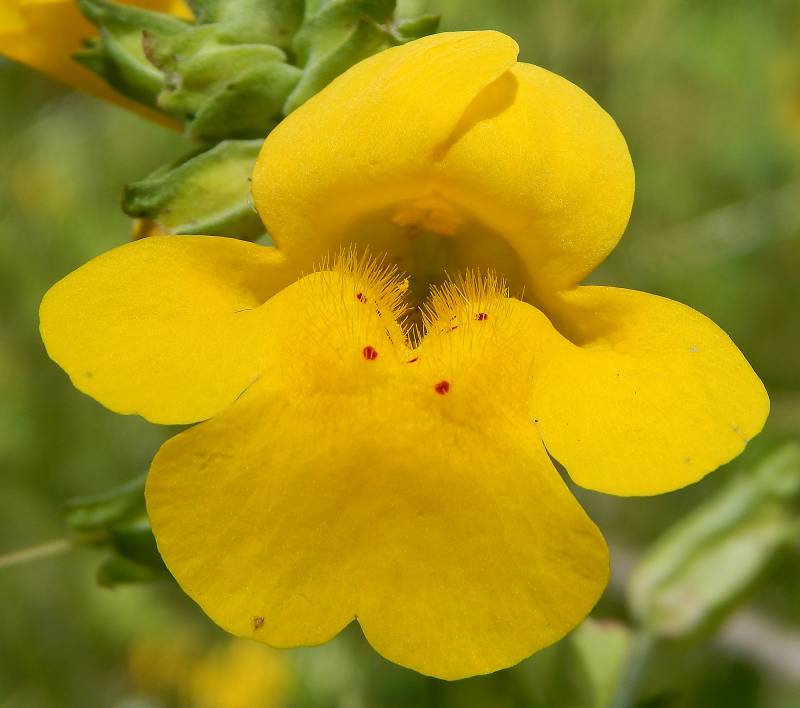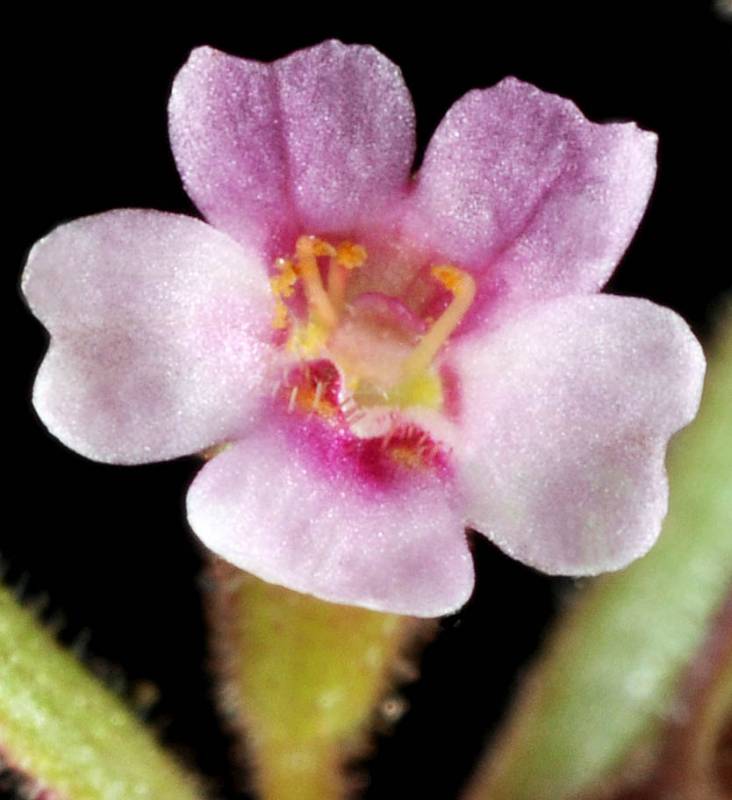Erythranthe decora
Erythranthe breweri
sharp-leaved monkey-flower, showy monkey-flower
Brewer's monkey-flower
Leaves mostly cauline, basal leaves generally not persistent;
petioles 8-25 mm near base, 3-5 mm mid-stem, sessile distally;
blade ovate-triangular to ovate-lanceolate, typically 20-50 mm long and 10-30 mm broad, palmate venation with 5-7 veins, base rounded to truncate to shallowly cuneate, margins sharply toothed, apex acute, surfaces occasionally becoming glabrous, distalmost surfaces hairy as stems.
Leaves opposite, linear to linear-oblanceolate, 1-2 cm. long and 1-4 mm. wide.
Axillary flowers generally 2-7, emerging from nodes at ends of stems; fruiting pedicels 18-35 mm, distalmost pedicels hairy as stems with hairs often barely deflexed;
calyx green with occasional red spots, ovoid, inflated, compressed across sagittal plane, 15-19 mm, hairy as stems, throat closing, lobe margins villous;
corollas yellow, throat commonly red-spotted, symmetric bilaterally, bilabiate;
tube-throat widely funnel-shaped, 18-26 mm, protruding 10-15 mm beyond calyx margin;
limb expanded 22-30 mm;
styles prominently hirsute to villous;
anthers not protruding, glabrous.
Flowers solitary in the leaf axils, the pedicels usually longer than the calyx;
calyx 5-lobed, 5-angled, the lobes short with prominent mid-veins;
corolla light purple to nearly red, slightly bilabiate, 5-10 mm. long and up to 2 mm. wide;
stamens 4.
Capsules 8-10 mm, included.
Capsule.
Erythranthe decora
Erythranthe breweri
- Local floras:
BC,
OR,
WA
- Local Web sites:
Flora NW,
PNW Herbaria
WildflowerSearch
iNaturalist (observations)
- LBJ Wildflower Center
- SEINet
- Plants of the World Online
- Encyclopedia of Life
- Wikipedia
- Google Image Search
- Local floras:
BC,
CA,
OR,
WA
- Local Web sites:
CalFlora,
CalPhotos,
Flora NW,
PNW Herbaria
WildflowerSearch
iNaturalist (observations)
- LBJ Wildflower Center
- SEINet
- Plants of the World Online
- Encyclopedia of Life
- Wikipedia
- Google Image Search



